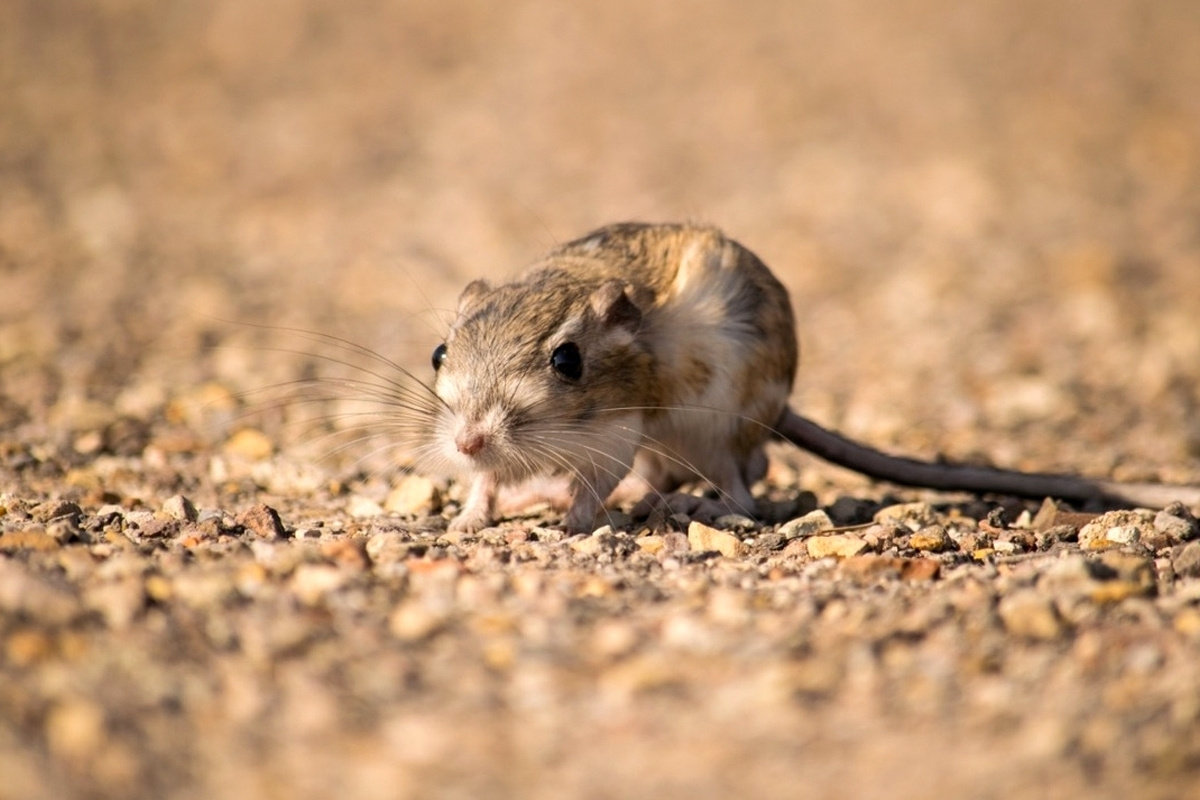
Did you know that the kangaroo rat can survive without drinking water? This tiny desert dweller has some incredible adaptations that allow it to thrive in harsh environments. Found mainly in North America, kangaroo rats are known for their large hind legs, which help them leap great distances to escape predators. Their diet consists mainly of seeds, which they store in cheek pouches and later bury in caches. These rodents have a unique way of conserving water by producing highly concentrated urine and dry feces. Additionally, they have specialized kidneys that extract maximum moisture from their food. Kangaroo rats are fascinating creatures with many more intriguing traits. Ready to learn more? Let's dive into 35 amazing facts about these remarkable animals!
Kangaroo Rats: Nature's Tiny Marvels
Kangaroo rats are fascinating creatures that thrive in some of the harshest environments on Earth. These small rodents have adapted in remarkable ways to survive in arid regions. Let's dive into some intriguing facts about these resilient animals.
Unique Physical Traits
Kangaroo rats possess several distinctive physical features that set them apart from other rodents.
- Long Hind Legs: Their powerful hind legs allow them to leap up to 9 feet in a single bound, helping them escape predators.
- Large Eyes: These nocturnal animals have large eyes that enhance their night vision, crucial for foraging in the dark.
- Fur-lined Cheek Pouches: They use these pouches to carry food back to their burrows without needing to stop and eat.
- Tail for Balance: Their long tails help maintain balance during their impressive jumps.
Adaptations to Arid Environments
Living in deserts requires special adaptations, and kangaroo rats have evolved several to thrive in such conditions.
- Water Conservation: They rarely drink water, obtaining moisture from the seeds they eat.
- Efficient Kidneys: Their kidneys are highly efficient, producing very concentrated urine to minimize water loss.
- Burrowing Behavior: They dig burrows to escape the extreme heat of the day and conserve moisture.
- No Sweat Glands: To prevent water loss, they lack sweat glands, relying on other methods to regulate body temperature.
Diet and Foraging
Kangaroo rats have a specialized diet and unique foraging habits that support their survival.
- Seed Eaters: Their primary diet consists of seeds, which provide both nutrition and moisture.
- Food Caching: They store seeds in various locations to ensure a steady food supply.
- Selective Foraging: They choose seeds with the highest water content to maximize hydration.
- Nocturnal Foraging: Foraging at night helps them avoid the daytime heat and predators.
Reproduction and Lifespan
Understanding their reproductive habits and lifespan offers insight into their survival strategies.
- Breeding Season: They typically breed in the spring when food is more abundant.
- Short Gestation: The gestation period lasts about 30 days, allowing for quick population growth.
- Litter Size: Females usually give birth to 2-4 offspring per litter.
- Lifespan: In the wild, they live about 2-5 years, though predators and environmental factors can impact this.
Predators and Defense Mechanisms
Despite their small size, kangaroo rats have developed effective ways to evade predators.
- Leaping Ability: Their impressive jumping skills help them escape quickly.
- Burrow Systems: Complex burrow systems provide shelter and multiple escape routes.
- Camouflage: Their fur color blends with the desert environment, making them harder to spot.
- Auditory Sensitivity: They have excellent hearing to detect approaching predators.
Interaction with Humans
Kangaroo rats also have interesting interactions with humans and the environment.
- Agricultural Impact: Sometimes considered pests due to their seed-eating habits.
- Conservation Status: Some species are endangered due to habitat loss and human activity.
- Scientific Research: Studied for their unique adaptations to arid environments.
- Cultural Significance: Featured in Native American folklore and stories.
Fun and Lesser-Known Facts
Here are some fun and lesser-known tidbits about kangaroo rats that highlight their uniqueness.
- Name Origin: Named for their kangaroo-like hopping.
- Nocturnal Lifestyle: Active primarily at night to avoid heat and predators.
- Solitary Animals: Prefer to live alone except during mating season.
- Communication: Use foot drumming to communicate with other kangaroo rats.
- Dental Adaptations: Continuously growing teeth to handle tough seeds.
- Energy Efficiency: Can lower their metabolic rate to conserve energy.
- Temperature Regulation: Use their burrows to maintain a stable body temperature.
- Minimal Water Needs: Can survive without drinking water for their entire lives.
- Seed Dispersal: Play a role in seed dispersal, aiding plant growth in their habitats.
- Escape Tactics: Can change direction mid-air while jumping to confuse predators.
- Unique Gait: Move in a bipedal fashion, similar to kangaroos, hence their name.
The Final Leap
Kangaroo rats are fascinating creatures with unique adaptations that help them thrive in harsh environments. From their incredible ability to survive without drinking water to their powerful hind legs that allow them to leap great distances, these small rodents are true marvels of nature. Their cheek pouches, used for storing food, and their nocturnal lifestyle further highlight their remarkable survival strategies. Understanding these facts not only deepens our appreciation for kangaroo rats but also underscores the importance of preserving their habitats. As we continue to learn about these resilient animals, we gain insights into the delicate balance of ecosystems and the incredible diversity of life on our planet. So next time you think about desert wildlife, remember the kangaroo rat and its extraordinary ways of navigating the world.
Was this page helpful?
Our commitment to delivering trustworthy and engaging content is at the heart of what we do. Each fact on our site is contributed by real users like you, bringing a wealth of diverse insights and information. To ensure the highest standards of accuracy and reliability, our dedicated editors meticulously review each submission. This process guarantees that the facts we share are not only fascinating but also credible. Trust in our commitment to quality and authenticity as you explore and learn with us.
